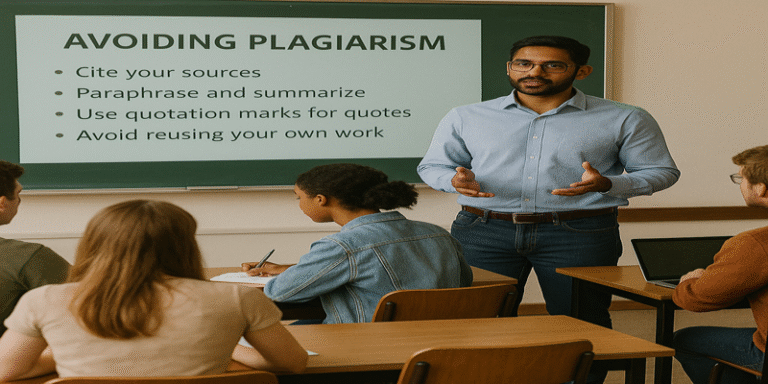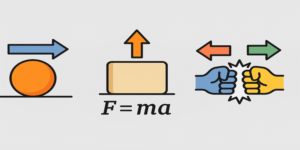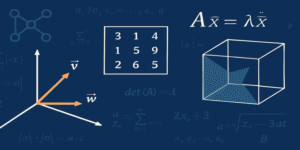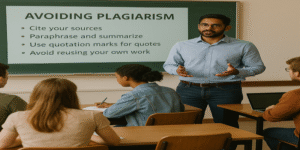Plagiarism is one of the most serious academic offences faced by students in higher education. It represents a violation of academic integrity and undermines the values of fairness, originality, and scholarship that universities uphold. According to the Heriot-Watt University Student Guide to Plagiarism, plagiarism is defined as the act of taking another person’s ideas, writings or inventions and using them as one’s own without proper acknowledgement (Heriot-Watt University, 2008). With the increased availability of digital resources, the temptation and opportunities for students to plagiarise have grown significantly, making it essential to understand how plagiarism can be avoided through correct referencing, ethical writing, and awareness of institutional policies.
Definition of Plagiarism
Plagiarism is not limited to directly copying text. It can include paraphrasing without citation, submitting purchased essays, copying peers’ work, or failing to reference digital sources. Park (2003) highlights that plagiarism is often misunderstood as merely copying text, but it also includes self-plagiarism, where students reuse their previous assignments without disclosure. Similarly, Carroll (2007) explains that plagiarism is both an ethical and an educational issue, as it not only misrepresents authorship but also prevents genuine learning.
The Student Guide to Plagiarism stresses that academic work typically involves building upon the ideas of others, which is acceptable provided the sources are correctly acknowledged (Heriot-Watt University, 2008). This aligns with what Pecorari (2008) describes as the intertextual nature of academic writing, where referencing demonstrates scholarly engagement rather than intellectual theft.
Forms of Plagiarism
Several distinct forms of plagiarism are identified in the literature:
- Direct Plagiarism – Copying verbatim without quotation marks or citation.
- Paraphrasing Plagiarism – Rewriting sentences but keeping the original ideas without acknowledgement.
- Patchwriting – Combining copied text with minor alterations, often common among novice writers (Howard, 1995).
- Self-Plagiarism – Reusing one’s own past work without declaring it (Walker, 1998).
- Collusion – Working together with peers but submitting identical work as individual assignments (Marsden et al., 2005).
For example, the Heriot-Watt Guide provides a clear case of plagiarism where a student inserted a published passage into an essay without citation, even though only minor words were changed. Such practices demonstrate how plagiarism can occur through both deliberate dishonesty and misunderstandings of academic conventions.
Reasons Why Students Plagiarise
Research suggests that students plagiarise due to a combination of pressure, ignorance, and opportunity. Devlin and Gray (2007) identify factors such as poor time management, lack of confidence in academic writing, and misunderstanding of referencing rules. Additionally, the growth of online essay mills and “copy-paste” culture makes plagiarism more accessible (Lancaster & Clarke, 2008).
A common misconception, as reported in the Heriot-Watt Guide, is that including a source in the bibliography alone is sufficient, even if no in-text citation is provided. This highlights the importance of student training in proper citation practices. Furthermore, international students may face additional challenges due to unfamiliarity with Western referencing styles (Sowden, 2005).
Consequences of Plagiarism
Plagiarism has severe consequences for both students and institutions. At an individual level, students risk academic penalties ranging from failing assignments to expulsion (Carroll, 2007). At an institutional level, repeated cases of plagiarism can damage a university’s reputation for academic credibility. According to the Heriot-Watt Guide, penalties may include annulment of assessments or compulsory termination of studies. Such outcomes underline the seriousness with which universities address academic misconduct.
Preventing Plagiarism
Avoiding plagiarism requires proactive strategies that involve students, educators, and institutions. The Heriot-Watt Guide outlines best practices such as using quotation marks for direct quotes, applying proper referencing styles like Harvard, and compiling a comprehensive reference list.
Textbooks and journals also emphasise strategies to encourage originality:
- Education and Training – Carroll (2007) recommends embedding plagiarism awareness in curricula, with explicit instruction on citation skills.
- Use of Technology – Software like Turnitin enables detection of unoriginal text, acting as both a deterrent and an educational tool (Sutherland-Smith, 2008).
- Assessment Design – Designing assignments that require critical reflection and personal application reduces opportunities for copying (Bretag, 2013).
For example, universities increasingly require students to submit essays alongside reflective commentaries on their writing process, making plagiarism more difficult.
Referencing and Academic Integrity
Correct referencing is central to avoiding plagiarism. The Harvard referencing system is widely used in the UK and involves citing the author’s surname and year in-text, with full details provided in the reference list (Neville, 2010). The Heriot-Watt Guide explains that referencing serves not only to credit the original author but also to demonstrate the breadth of reading undertaken by the student.
Moreover, referencing reflects academic honesty by acknowledging that knowledge is built upon prior scholarship. Pecorari (2008) argues that accurate citation practices foster a culture of transparency and integrity, allowing readers to verify claims and trace the development of ideas.
Examples of Good Practice
Good academic practice includes:
- Quoting directly with citation: e.g., “Plagiarism involves the act of taking the ideas, writings or inventions of another person and using these as if they were one’s own” (Heriot-Watt University, 2008, p.1).
- Paraphrasing with attribution: Paraphrasing maintains the writer’s voice while crediting the source (Neville, 2010).
- Maintaining a research log: This helps students track sources, preventing mistakes such as forgetting where information was found.
For instance, a student writing an essay on higher education funding could cite both Brown (1991) and Smith (2002) to demonstrate awareness of differing viewpoints, as illustrated in the Heriot-Watt Guide.
Plagiarism is a complex issue that extends beyond copying text to encompass ethical, cultural, and educational dimensions. Universities play a critical role in educating students about academic integrity while enforcing policies to deter misconduct. Students, on their part, must adopt good referencing habits, manage their time effectively, and seek guidance when in doubt. Ultimately, avoiding plagiarism is not merely about compliance with rules; it reflects a commitment to honesty, fairness, and respect for intellectual labour. By cultivating academic integrity, higher education institutions can ensure that learning remains authentic and meaningful.
References
Bretag, T. (2013). Challenges in addressing plagiarism in education. PLoS Medicine, 10(12), e1001574.
Carroll, J. (2007). A Handbook for Deterring Plagiarism in Higher Education. 2nd ed. Oxford: Oxford Centre for Staff and Learning Development.
Devlin, M. and Gray, K. (2007). ‘In their own words: A qualitative study of the reasons Australian university students plagiarise’. Higher Education Research & Development, 26(2), pp.181–198.
Heriot-Watt University (2008). Student Guide to Plagiarism. Edinburgh: Heriot-Watt University. Available at: http://www.hw.ac.uk/ordinances/regulations.pdf [Accessed 11 Sept. 2025].
Howard, R. M. (1995). ‘Plagiarisms, authorships, and the academic death penalty’. College English, 57(7), pp.788–806.
Lancaster, T. and Clarke, R. (2008). ‘The phenomena of contract cheating’. In: 2nd International Plagiarism Conference. Newcastle: Northumbria University.
Marsden, H., Carroll, M. and Neill, J. T. (2005). ‘Who cheats at university? A self-report study of dishonest academic behaviours in a sample of Australian university students’. Australian Journal of Psychology, 57(1), pp.1–10.
Neville, C. (2010). The Complete Guide to Referencing and Avoiding Plagiarism. Maidenhead: Open University Press.
Park, C. (2003). ‘In other (people’s) words: plagiarism by university students—literature and lessons’. Assessment & Evaluation in Higher Education, 28(5), pp.471–488.
Pecorari, D. (2008). Academic Writing and Plagiarism: A Linguistic Analysis. London: Continuum.
Sowden, C. (2005). ‘Plagiarism and the culture of multilingual students in higher education abroad’. ELT Journal, 59(3), pp.226–233.
Sutherland-Smith, W. (2008). Plagiarism, the Internet and Student Learning: Improving Academic Integrity. New York: Routledge.
Walker, J. (1998). ‘Student plagiarism in universities: What are we doing about it?’ Higher Education Research & Development, 17(1), pp.89–106.









